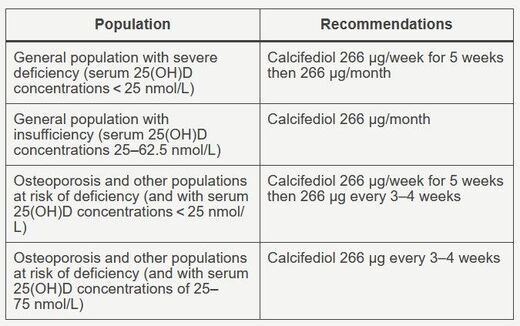
Background
MV is a moderate smoker and, as I see it, she hasn't quit smoking, despite her own very negative views on this habit, due to self-medication purposes. Simply put, she needs regular nicotine infusions to survive what she is going through. See my article here on this subject: COVID-19, ACE2, Nicotinic Receptors And The Cholinergic Anti-Inflammatory And Cognitive-Improving Pathway.
MV has no known allergies, but is intolerant to opioids, and supplements like the highly available magnesium bisglycinate gives her diarrhea. This later data and the fact that she has been persistently low in folic acid since the COVID-19 era, like most of my patients, makes me think that her microbiome took a hit with SARS COV2, like most affected people.
MV, by the way, received 3 doses of COVID-19 mRNA and has had COVID-19 on 6 occasions since 2020.
Since then, she has had a chronic cholecystitis, for which her gall bladder had to be surgically removed. She also has a past history of lower back pain due to a herniated disc and, like most patients, a big crisis or two was typical after a COVID-19-related event, whether the vaccine or a COVID-19 infection.
Her only occasional treatment was painkillers in the form of NSAIDs or cortisone, depending on the severity of her back pain or other articular symptoms.
MV is also obese and going through perimenopause.
Burden of disease
Other than severe fatigue, brain fog and anxiety attacks, MV suffers from joint pains and lower limbs neuropathic pain, a syndrome compatible with Long COVID-19. Lab tests show an inflammatory syndrome in the protein electrophoresis panel.
An electromyography was ordered, but it's still pending due to other intervening factors which have delayed her follow-ups. Mainly, she recently lost 3 loved ones in her inner circle, a rather common experience these days among patients and people in general.
She also postponed her follow-ups for another reason: the calcifediol that I prescribed has enormously relieved her symptoms.
Calcifediol
I first heard of calcifediol when an elderly patient asked for it because his old school doctor, who recently retired, prescribed it. The patient just wanted a renewal. However, I only later realized the importance of that molecule after watching this video:
In short, calcifediol is the active form of vitamin D, and it's particularly helpful for those who need desperately vitamin D's actions to take effect within the day, i.e. acute infection.
The two commonly available forms of vitamin D supplementation for maintaining vitamin D status, or treating vitamin D deficiency or insufficiency, are ergocalciferol (vitamin D2) and cholecalciferol (vitamin D3). In Spain, calcifediol (our active vitamin D3 metabolite of interest) has been used for these same purposes for more than 40 years and recently became available in several other European countries (e.g., Poland, The Netherlands, Belgium) and in Latin America (e.g., Chile, Colombia, Ecuador, Peru, Mexico) (Jodar E. et al., 2023).
A key molecular difference between calcifediol and vitamin D3 is that calcifediol is one step closer in the metabolic pathway to biologically active vitamin D, which is an added benefit especially for those who have malabsorption, liver impairment and obesity (Jodar E. et al., 2023).
These are the pharmacological advantages of calcifediol as a vitamin D supplement:
Calcifediol will almost double the amount of vitamin D levels in blood compared to when the equivalent of vitamin D3 is given as a supplement.Calcifediol increases serum 25(OH)D levels more rapidly than cholecalciferol Calcifediol has a linear dose-response curve more predictable than that of cholecalciferol (Vitamin D3) Calcifediol does not require liver metabolism for activation, making it more suitable for patients with impaired liver function Calcifediol is more hydrophilic than cholecalciferol (Vitamin D3), which means that it doesn't get sequestered in the adipose tissue of obese or overweight individuals. Calcifediol is more effective in patients with intestinal malabsorption (Jodar E. et al., 2023).
Calcifediol 15 mg/100 ml, 1 drop=5mcg. 20 mcg equals 800 units and 10 drops equals 2000 units.
Normal vitamin D levels in blood range from 50 to 250 nmol/L. Hypervitaminosis D (vitamin D toxicity - hypercalcemia, hypercalciuria, nephrocalcinosis) manifests in excess of 375 nmol/L, which means that it's very difficult to overdose. You have to mega-overdo it for a long period of time. Nevertheless, due to calcifediol's efficacy, a maximum of 10 drops is usually the recommendation. Exceptions include an acute infection or ICU sepsis.
Since calcifediol is not available in some countries, vitamin D3 is your next best thing. It wouldn't hurt to have calcifediol stocked from Mexico (or... use your imagination) in case of a significant acute infection, or if you're obese or have liver detox or metabolic pathway issues.
As I said, calcifediol has been widely used in Spain for over 40 years, and there have been very few reports to the Spanish Pharmacovigilance System for hypercalcemia and/or hypervitaminosis D. In weekly or biweekly doses of calcifediol 266 µg (i.e., in excess of the recommended dose) for 6-12 months in patients with osteoporosis or asthma, serum 25(OH)D concentrations remained below the 250 nmol/L threshold considered to be a risk for hypercalcemia (Jodar E. et al., 2023).
According to international guidelines, in patients with serum 25(OH)D concentrations below 30 nmol/L, the recommended cumulative dose of vitamin D3 is 300,000 IU over a maximum period of 12 weeks, divided into daily, weekly, or monthly administration (with no dose to exceed 100,000 IU for safety reasons). The recommended regimen of calcifediol is as follows:

Source: Spanish Society for Bone Research and Mineral Metabolism (SEIOMM)-recommended dosage regimens for calcifediol in different patient populations with vitamin D deficiency.
Asthma patients improve significantly in their scores with calcifediol.
There's a statistically significant reduction in mortality risk and ICU admission among patients admitted to COVID-19 hospital wards who had received calcifediol during the first 30 days. Due to its mechanism of action (availability within hours) and based on studies, calcifediol could be considered for all patients with acute viral infections to correct vitamin D deficiency.
As a treatment option for secondary hyperparathyroidism in non-dialysis patients with chronic kidney disease and vitamin D insufficiency, extended-release calcifediol was shown to gradually improve serum 25(OH)D concentrations, leading to physiologically regulated increases in serum 1,25(OH)2D concentration and sustained reductions in PTH, without any clinically relevant increases in serum phosphorus, calcium and bone-derived fibroblast growth factor 23, which promotes hypophosphatemic rickets and tumor-induced osteomalacia (Jodar E. et al., 2023).
Final Thoughts
Since I started using and prescribing calcifediol after learning about its advantages, my first positive feedback was that of MV, discussed above, and who never saw the same benefits with vitamin D3 (cholecalciferol) at 100,000 units per month. I witnessed how she has suffered since the beginning of the COVID-19 era, and calcifediol supplementation has since become the best therapeutic for her: it's a molecule that calms ALL her symptoms, and she looks forward to her dose every day.
Make sure to keep calcifediol in mind.
References
Dr John Campbell's videos on vitamin D
Jodar E, Campusano C, de Jongh RT, Holick MF. Calcifediol: a review of its pharmacological characteristics and clinical use in correcting vitamin D deficiency. Eur J Nutr. 2023 Jun;62(4):1579-1597. doi: 10.1007/s00394-023-03103-1. Epub 2023 Mar 2. PMID: 36862209; PMCID: PMC9979899.
Source link

